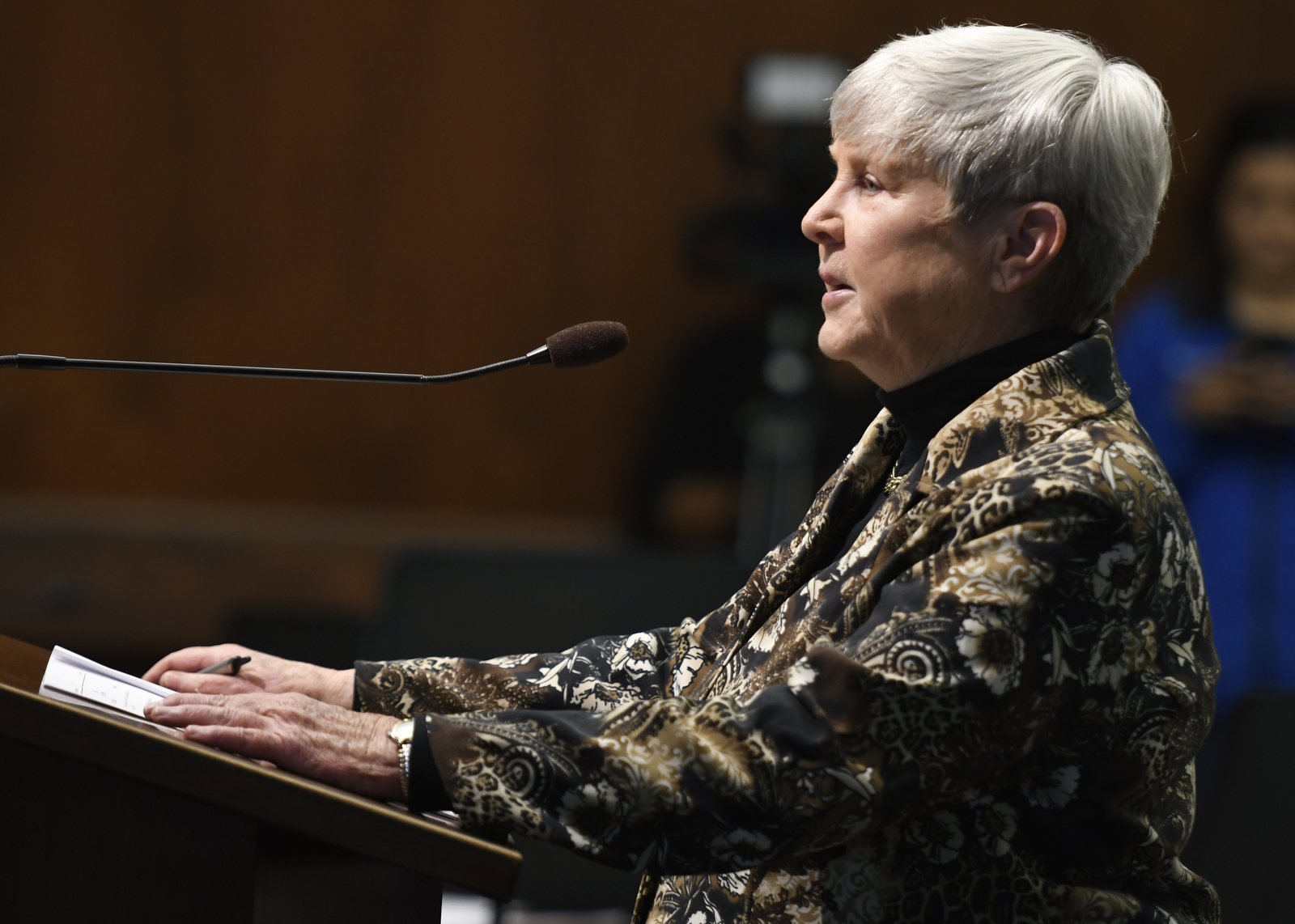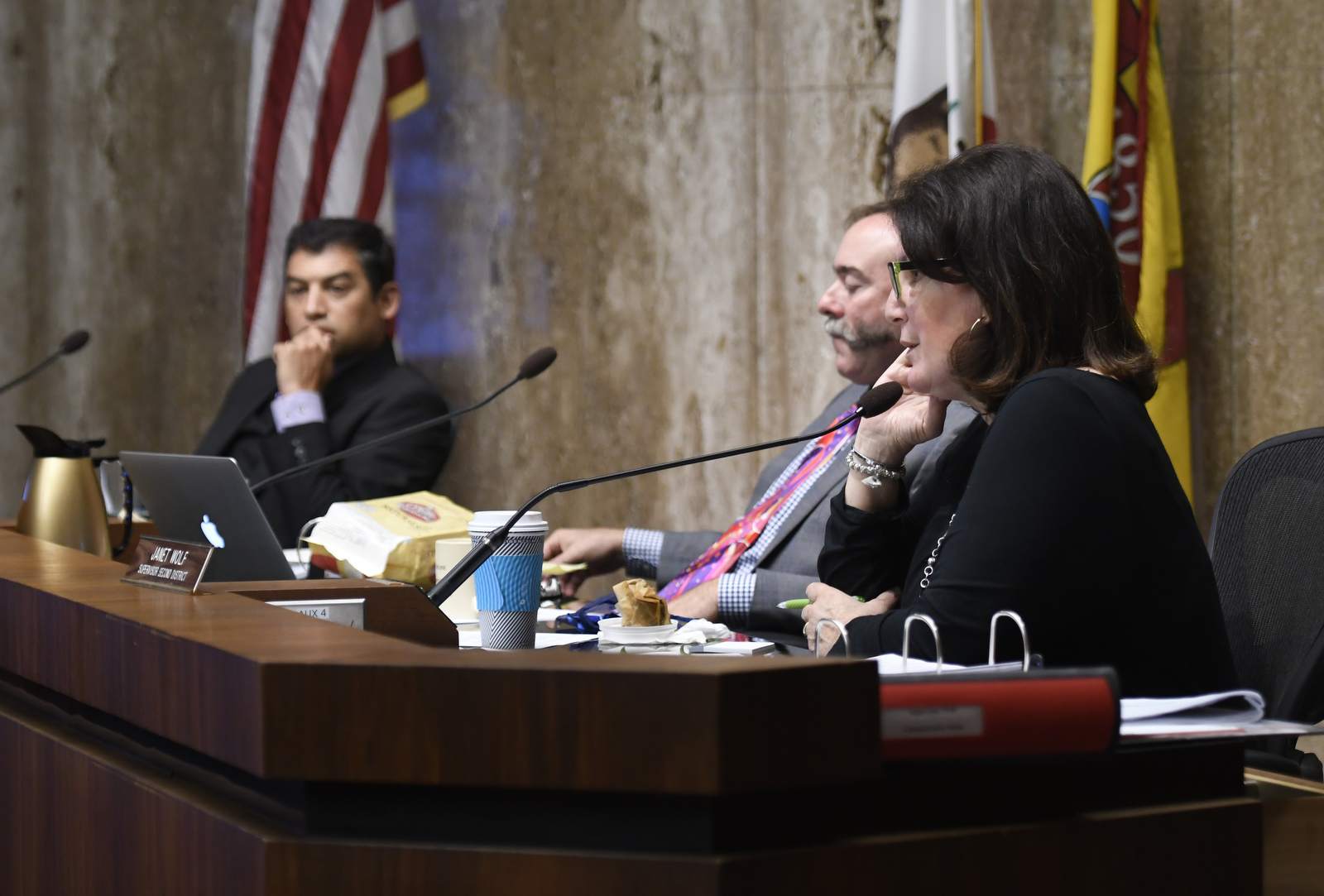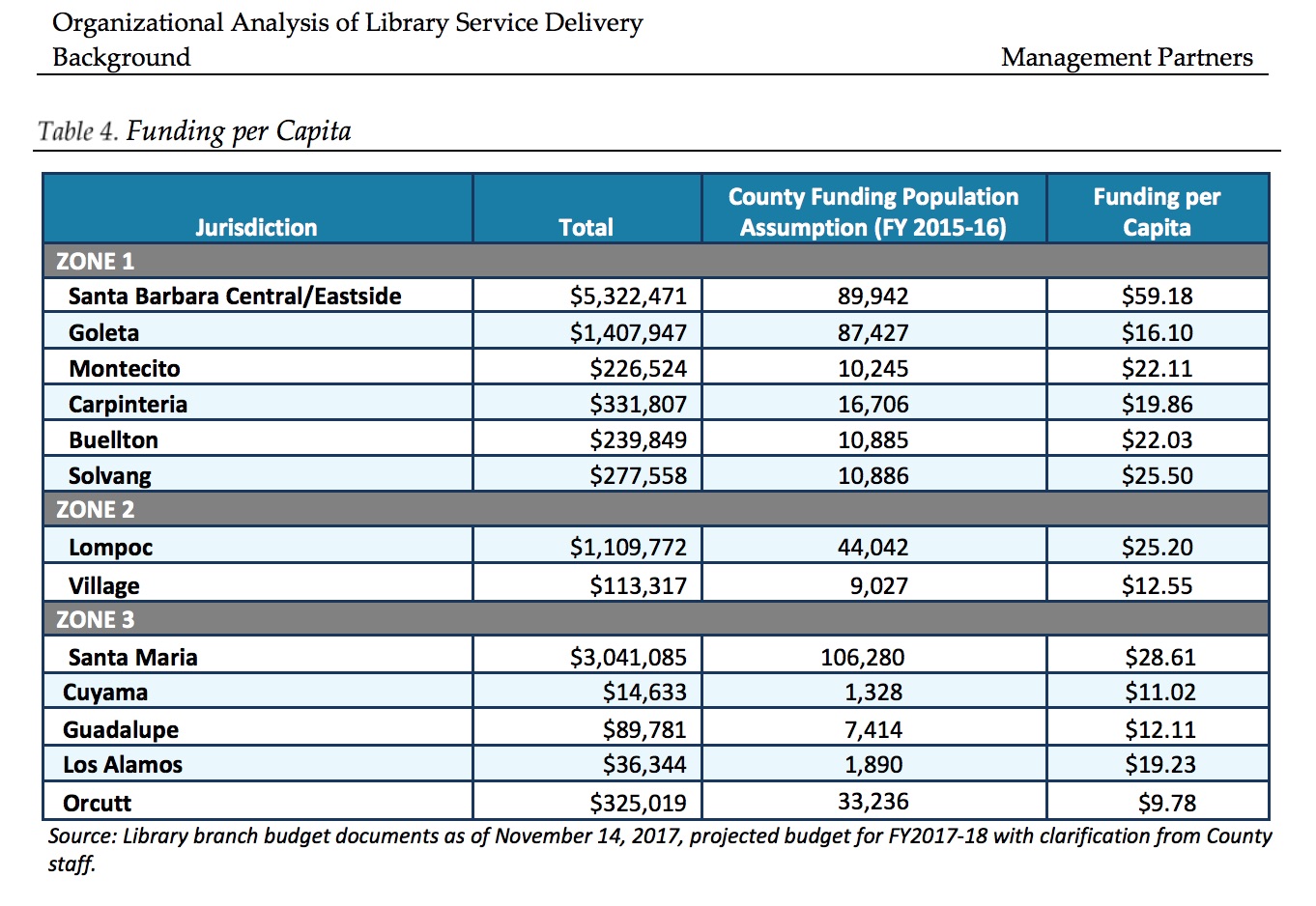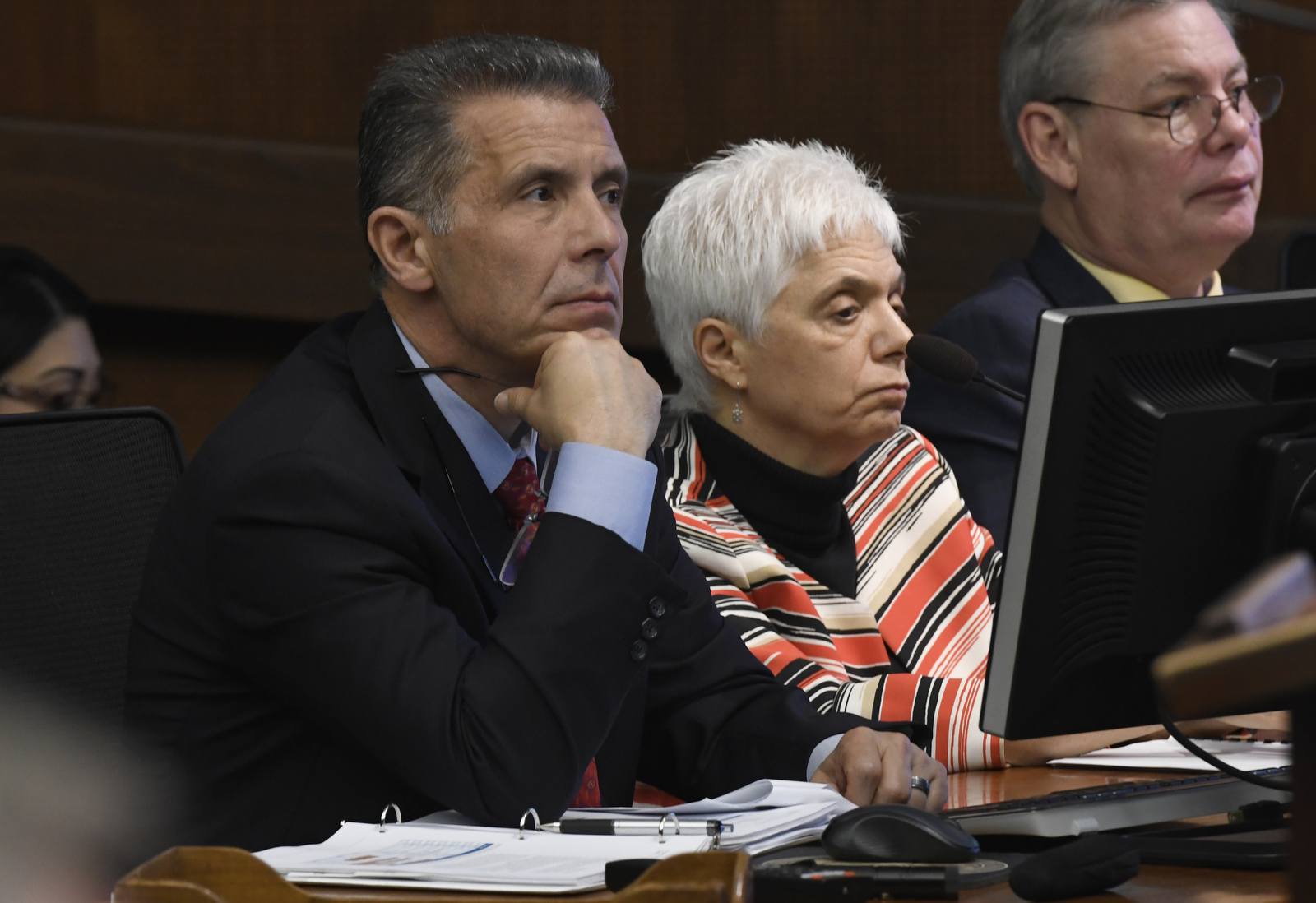County Avoids Shocks to the Library System
Continues Per Capita Funding, Curbs Admin Fee, Creates Equity Fund

“Winners and losers” became a constant refrain during Tuesday’s all-morning Board of Supervisors session on how to fund libraries in the county. The only losers by the end, however, were a couple of recommendations made in a long-awaited report by consultants hired to untangle financing in the three library zones. In the “win” column was the county’s Library Advisory Committee (LAC), whose ideas to curb administration fees and start a “fairness” fund fell on welcoming ears.
The win/lose calculus became clearer when Supervisor Peter Adam of Lompoc objected that Orcutt or Lompoc, or both, were “screwed” by the various funding and contribution analyses in the report. Finding equity for small libraries and large, and for those supported by a city and those that were not, was the basis of a half-dozen funding models that gave and took from the libraries by turn.

Amid the many tables that compared and contrasted funding in the county and beyond, and also populations served by individual libraries, was one showing per person spending. Only the City of Santa Barbara libraries, at $59.18 per capita, came close to the state average of $73.71, a number that reflects 2015-16. Next highest was Santa Maria at $28.61. Lowest was Orcutt at $9.78.

A one-to-one match from cities for county funds was suggested by consultant Adam Belknap of Management Partners, but the idea didn’t fly because the ratio of people from the city or county that use each library varies greatly. Representatives from Goleta and Carpinteria indicated that funding from their cities was increasing: Goleta Councilmember Michael Bennett stated an increase over the previous year had already been approved, and Gabby Edwards, who represents Carpinteria on the LAC, said the city was in the process of putting on the next ballot a tax that included additional library funding.
The turning point came when the library committee’s Judith Dale, who represents Buellton and heads that library’s Friends fundraising group, made several “painless and fair” recommendations based on the group’s examination of the report over the past month. She proposed leaving in place the current county funding — a dollar amount based on population — but setting aside 5 percent as an “equity fund” this year to reach libraries that needed more help. The committee “lives and loves libraries,” she said, and knew where the $156,000 needed to go — to help Guadalupe, for instance, and tide Carpinteria over until a library-benefiting tax were in place. It was also willing and able to manage the funds.
Dale also advised the supervisors to set a cap on administration fees across the library zones, a fee that each calculates quite differently. However they figured it, she said, limit it to no more than 20 percent of county funding, aka the per capita payment. The admin fee became an issue last June when the City of Santa Barbara proposed doubling it — and basing it on total income — in order to recoup all the costs of managing the seven libraries beyond city borders. The increase had the potential to bankrupt two branches and was scaled back, but the furor brought the dwindling resources of the branches into focus and set the county consultants in motion. Their 66-page report emphasized the near-equal contributions to library funding by the city and the county — roughly $4 million each — and encouraged the county to assert a cap on administration fees. The supervisors did so.
Another issue library proponents had raised was the city’s practice of including donation money in that admin fee calculation. It’s been donations that have kept the branches from “going down the tubes,” said Supervisor Das Williams. Indeed, the Friends of the Montecito Library raise as much as half that library’s income. The danger was that donations would falter if all the money didn’t go to the library and instead went for “overhead.” Conversely, explained George Chapjian, head of county Community Services, large donations can trigger staff and admin costs when they increase programming. The supervisors’ vote included talks with the library zones — there are now four, with Goleta’s being added today — to remove gifts from the admin fee calculation.

In addition to Dale and Edwards, Milt Hess, vice chair of the LAC asked the supervisors to wait until after the group’s April meeting to decide any funding figures. They stated that after their March vote, the consultants’ numbers had changed so much that they were taking a recount at a special meeting. The consultants acknowledged that discrepancies in the figures they’d been given by different entities led to some variances, but they believed they were now minor.
Ultimately, the supervisors voted to give 5 percent of its library funding into the hands of the Library Advisory Committee, rather than create an equity formula, as the consultants advised. Forming a Joint Powers Authority, another recommendation, would be considered another day — though the influence and scholarship of the Library Advisory Committee could make that idea moot.
The remainder of Supervisor Janet Wolf’s multi-part motion instructed Goleta to work with Buellton and Solvang libraries to form Zone 4 within a year, removing the three from Santa Barbara’s Zone 1. Lompoc’s Zone 2 and Santa Maria’s Zone 3 were unchanged. The county’s funding to libraries otherwise remains the same for the moment, to minimize shocks to the system.



